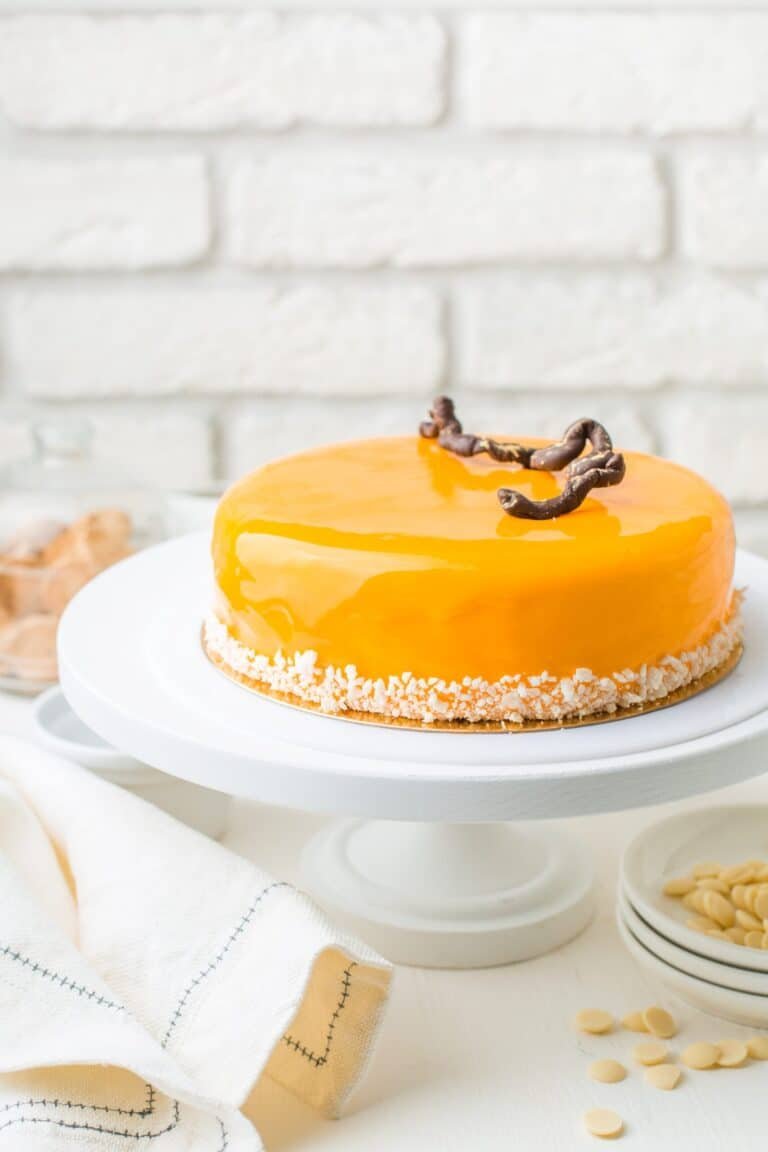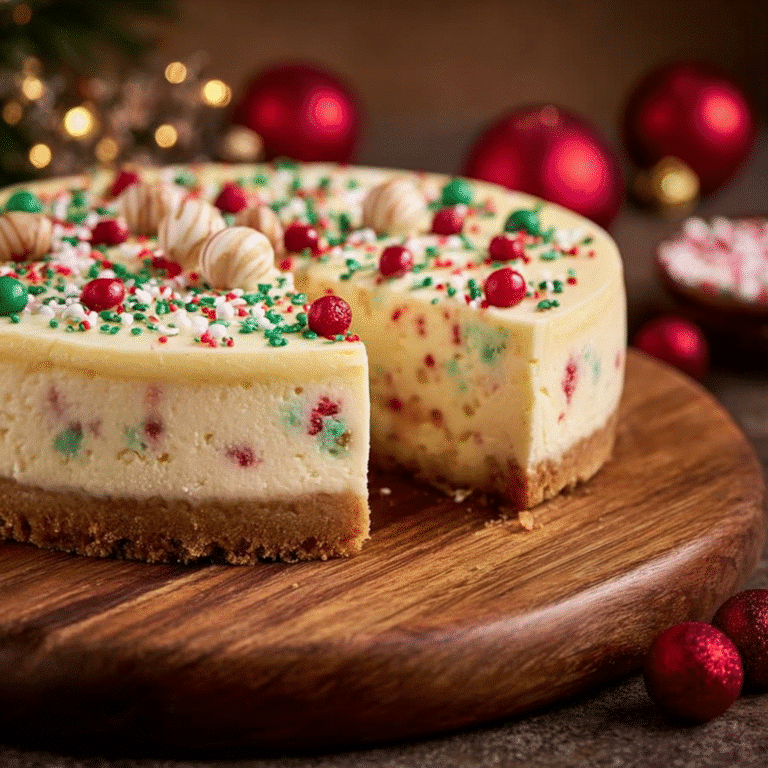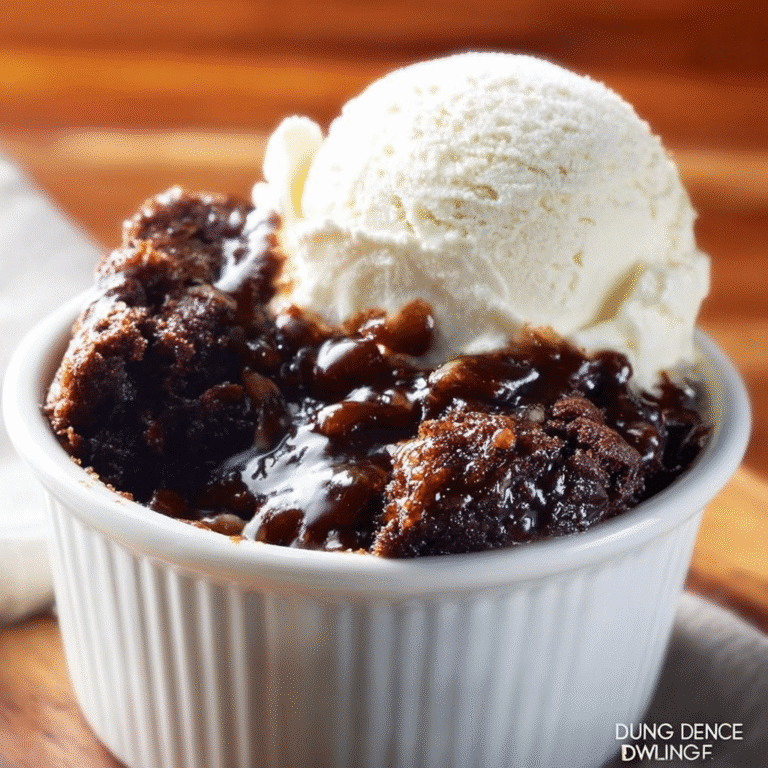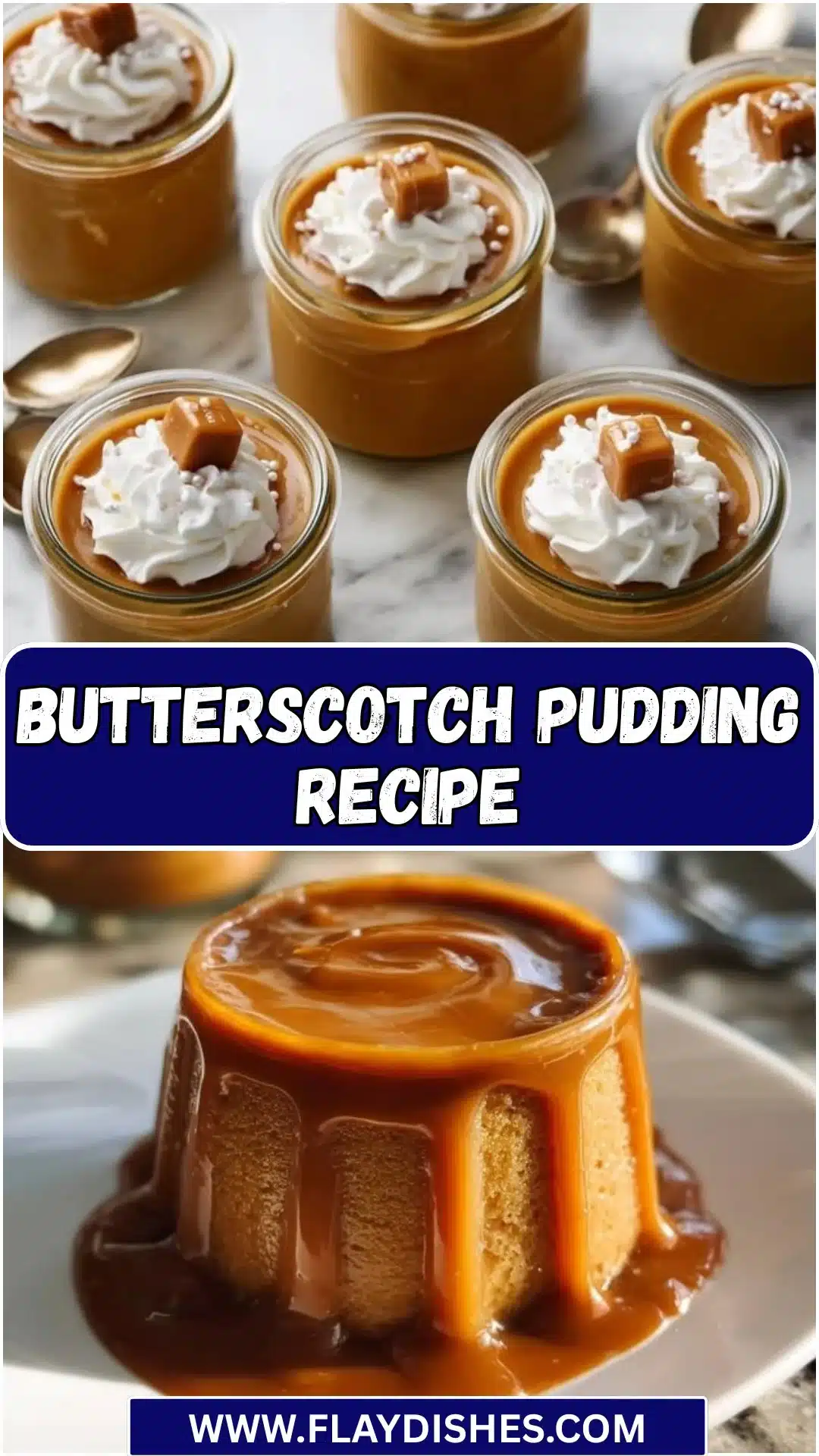
As a child, I remember the first time I laid eyes on Butterscotch Pudding. It was a golden pool of sweetness, glistening in its glass dish on my grandmother’s countertop in Asheville, North Carolina. The scent wafted through the air, rich and buttery, wrapping me in a warm embrace before I even dared to take a bite. I stood there, curious, my heart racing a bit as I waited for the moment my grandmother would serve it to our eager family. She had a knack for turning the simplest of dishes into something extraordinary, and that day, her Butterscotch Pudding felt like magic.
As she ladled generous servings into bowls, the creamy texture caught the light just right, promising a sweet, indulgent experience. I remember the first taste—smooth and buttery, its sweetness cutting through a slight hint of saltiness, a comforting balance of flavors that felt like a lovingly woven story. The way it melted in my mouth reminded me of the love my grandmother stirred into every meal. Each spoonful was more than just dessert; it was a memory of laughter and gathering, a continuation of our family traditions. Even now, every time I recreate that Butterscotch Pudding, I’m reminded of those joyous moments shared around the table—all thanks to my grandmother’s culinary wisdom and a little bit of nostalgia.
Flavor and Popularity
The Unique Flavor Profile of Butterscotch Pudding
Butterscotch Pudding carries a distinct flavor that dances between buttery sweetness and a hint of caramel. Its smooth, velvety texture creates a delightful contrast with the comforting warmth of its rich brown sugar essence. The complexity lies in its simplicity: the mingling of real butter and brown sugar cooked to perfection until it achieves that deep, golden hue, which holds stories steeped in tradition and love. This classic dessert captivates the senses, offering a nostalgic taste of childhood that sprawls across generations.
The beauty of Butterscotch Pudding doesn’t just lie in its flavor but also in its versatility. Whether you enjoy it straight from a bowl or with a dollop of whipped cream, it remains approachable yet sophisticated, making it a dessert that appeals to all ages. Perhaps that’s why it remains a beloved treat, finding a spot on the dinner tables of modern homes while holding onto its vintage charm. From family reunions to quiet evenings in, Butterscotch Pudding brings people together, turning ordinary moments into cherished memories.
Why This Recipe Is a Family Favorite and Crowd-Pleaser
It’s no wonder that Butterscotch Pudding is a family favorite, filled with nostalgia and smiles. This dessert embodies warmth and comfort, often evoking sweet memories of childhood, just like it does for me. There’s something incredibly satisfying about watching a group of friends or family gather around the table, eagerly passing the dessert bowl while sharing stories and laughter. Each bite becomes a celebration, a moment of connection strengthened by shared taste.
Butterscotch Pudding shines as a crowd-pleaser for more than just its incredible flavor. The simplicity of the recipe creates an inviting experience for home cooks and families alike. It allows creativity through various toppings, like crushed cookies or fresh fruit, which can transform the dish into something unique. Because this pudding is both indulgent and approachable, it caters to diverse palates, making it a staple for gatherings, potlucks, or even intimate dinners. Bring out Butterscotch Pudding at your next celebration, and watch how it lights up faces, uniting everyone with a shared love for this timeless classic.
Ingredients and Preparation
Essential Ingredients and Possible Substitutions
To create a lusciously creamy and dreamy Butterscotch Pudding, you’ll need to gather a few essential ingredients. Here’s what you’ll want on hand:
- Brown Sugar: This is the star of the show, delivering that signature butterscotch flavor. Dark brown sugar can give a more robust flavor, while light brown sugar provides a milder taste.
- Butter: Use unsalted butter to control the saltiness of your pudding. The rich, buttery flavor creates the luscious base.
- Milk: Whole milk is best for a creamy consistency, but you can substitute with 2% or even almond milk if you’re looking for a lighter version.
- Egg Yolks: These act as your thickening agents, ensuring a silky texture. Egg substitutes like cornstarch can work as an alternative if you need a vegan option.
- Vanilla Extract: A splash of pure vanilla enhances the flavor beautifully. You might even consider using fresh vanilla beans for a more aromatic profile.
If you need substitutions, don’t fret! You can swap in coconut milk for a unique twist or use sweeteners like maple syrup instead of brown sugar to introduce a new dimension of flavor. Experimenting will lead to delicious discoveries!
Step-by-Step Recipe Instructions with Tips
Preparing Butterscotch Pudding is a charming process that invites you into the kitchen. Here’s how to achieve that dreamy dessert with a few tips for success:
Melt the Butter: In a saucepan over medium heat, melt the butter, stirring until it’s bubbling, golden brown, and fragrant—watch closely so it doesn’t burn!
Add Brown Sugar: Stir in the brown sugar and keep stirring until it’s fully dissolved, creating a glossy mixture.
Combine Milk and Egg Yolks: In a separate bowl, whisk the egg yolks and the milk together until smooth. This blend will help to temper the eggs and prevent curdling.
Incorporate the Mixture: Gradually pour the milk and egg mixture into the saucepan with the brown sugar, whisking continuously to combine.
Cook Until Thickened: Keep cooking over medium heat, almost bringing it to a simmer. The pudding should thicken perfectly in about 5-7 minutes. Be sure to stir frequently so it doesn’t stick to the bottom.
Flavor with Vanilla: Once thickened, remove the pot from the heat and stir in the vanilla extract for that aromatic finish.
Chill: Pour the pudding into dishes and let them cool at room temperature for a bit before transferring them to the fridge. This resting period helps the flavors deepen.
Serve: After chilling for a couple of hours, your Butterscotch Pudding is ready to serve! Top it with whipped cream, a sprinkle of sea salt, or even some toasted nuts for a delightful crunch.
Cooking Techniques and Tips
How to Cook Butterscotch Pudding Perfectly
Cooking Butterscotch Pudding may seem straightforward, but a little finesse will take it to the next level. Here are my cherished tips for cooking this decadent dessert to perfection:
Constant Whisking: Always whisk the mixture while it cooks. This prevents the eggs from scrambling and ensures a lump-free pudding.
Monitor the Heat: Maintain medium heat to avoid scorching the sugar. Too high, and you risk a sticky mess; too low, and it may take ages to thicken.
Taste Along the Way: Don’t be shy! Taste your pudding as it cooks and adjust the sweetness to your liking. Not everyone enjoys super sweet desserts, so make it yours!
Common Mistakes to Avoid
Like any recipe, there are a few common pitfalls when making Butterscotch Pudding. Here’s what to watch for:
Not Stirring Enough: If you neglect to stir frequently, you could end up with scorched sugar or clumps in your pudding. Keep that wooden spoon or whisk moving!
Overcooking: Watch the pudding closely to avoid cooking it too long, which can lead to a rubbery texture. It should be luscious and creamy, not dense and dry.
Skipping the Chill: Don’t skip chilling the pudding. This crucial step enhances the flavors and gives it the signature creamy consistency.
Health Benefits and Serving Suggestions
Nutritional Value of Butterscotch Pudding
While Butterscotch Pudding is undeniably a sugary indulgence, there are a few positives to consider. It’s rich in calcium thanks to the milk and provides a source of energy due to its carbohydrates. You can also elevate its nutritional profile by topping it with fresh fruits, nuts, or yogurt, which adds fiber, vitamins, and healthy fats—stacking those health benefits right on top of that sweet, sweet goodness!
Best Ways to Serve and Pair This Dish
Serving Butterscotch Pudding can be as fun as making it! Here are some delightful ideas to elevate your serving game:
Classic Presentation: Serve in small glass cups to show off that golden color.
Garnish Creatively: Top with fresh whipped cream, a sprinkle of sea salt, or crushed toffee bits for a crunchy contrast. Berries also add a refreshing zing to balance the sweetness.
Layer It Up: Create beautiful dessert parfaits by layering Butterscotch Pudding with crushed cookies, caramel sauce, or even your favorite ice cream. It’s sure to impress your guests!
FAQ Section
What type of mushrooms are best for Butterscotch Pudding?
You won’t actually find mushrooms in a traditional Butterscotch Pudding recipe. The dessert relies on the rich, buttery flavor created by the sugar and butter combination. If you’re looking for earthy notes, consider blending in a dash of espresso powder or a hint of sea salt.
Can I use dried garlic instead of fresh?
Garlic is not a typical ingredient in Butterscotch Pudding. This dessert focuses on sweet, buttery flavors and wouldn’t benefit from garlic. Instead, concentrate on enhancing its buttery and sugary nature.
How do I store leftover Butterscotch Pudding?
Store leftover Butterscotch Pudding in an airtight container in the fridge for up to four days. Remember to place a piece of plastic wrap on the surface of the pudding to prevent it from forming a skin.
Can I freeze Butterscotch Pudding?
While you technically can freeze Butterscotch Pudding, the texture may change once thawed. It may become grainy after freezing. If you choose to freeze it, make sure to thaw it gently in the fridge before serving.
As I wrap up this homage to one of my all-time favorite desserts, I can’t help but encourage you to try making Butterscotch Pudding. If you’re like me, that little burst of sweetness reminds us of the importance of cozy moments spent around the table with loved ones. There’s something comforting about creating a dish that carries with it stories, love, and joy. So go ahead, take the plunge into this delightful treat. Trust me, you’ll want to make this Again and again, keeping the tradition alive for generations to come!
Print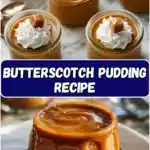
Butterscotch Pudding
- Total Time: 25 minutes
- Yield: 4 servings 1x
- Diet: Vegetarian
Description
A creamy, buttery dessert that brings back childhood memories, perfect for gatherings and family traditions.
Ingredients
- 1 cup brown sugar
- 4 tablespoons unsalted butter
- 2 cups whole milk
- 3 large egg yolks
- 1 teaspoon pure vanilla extract
Instructions
- Melt the butter in a saucepan over medium heat until bubbling and golden brown.
- Add the brown sugar and stir until fully dissolved.
- In a bowl, whisk the egg yolks and milk together until smooth.
- Gradually pour the egg mixture into the saucepan, whisking continuously.
- Cook, stirring frequently, until the pudding thickens (about 5-7 minutes).
- Remove from heat and stir in the vanilla extract.
- Pour into serving dishes and cool before refrigerating for a few hours.
- Serve with whipped cream or toppings of your choice.
Notes
For a unique twist, substitute coconut milk or maple syrup as sweeteners.
- Prep Time: 15 minutes
- Cook Time: 10 minutes
- Category: Dessert
- Method: Cooking
- Cuisine: American
Nutrition
- Serving Size: 1 serving
- Calories: 350
- Sugar: 30g
- Sodium: 150mg
- Fat: 14g
- Saturated Fat: 8g
- Unsaturated Fat: 4g
- Trans Fat: 0g
- Carbohydrates: 50g
- Fiber: 0g
- Protein: 6g
- Cholesterol: 150mg
Keywords: Butterscotch, pudding, dessert, nostalgic, family recipe


